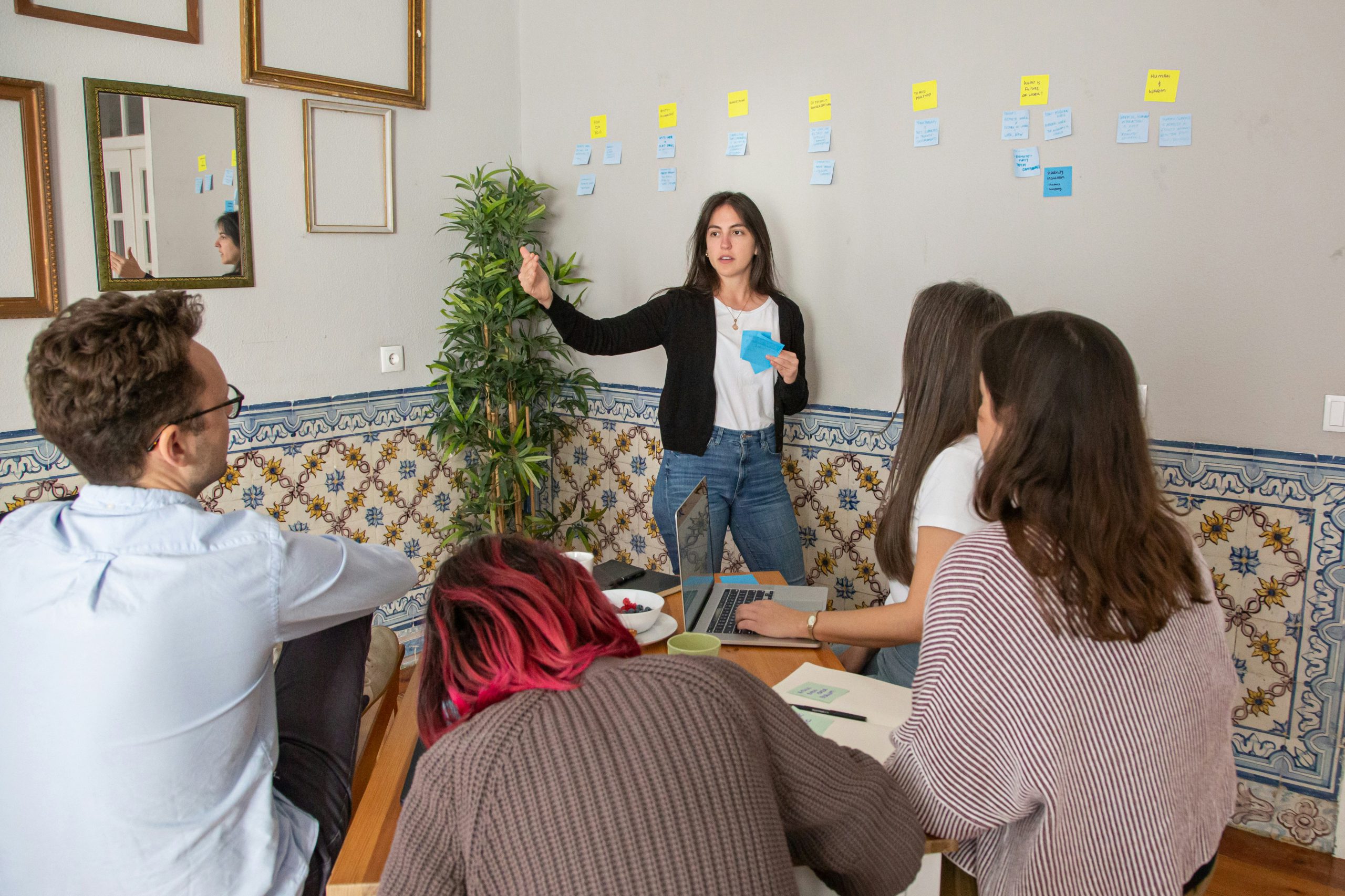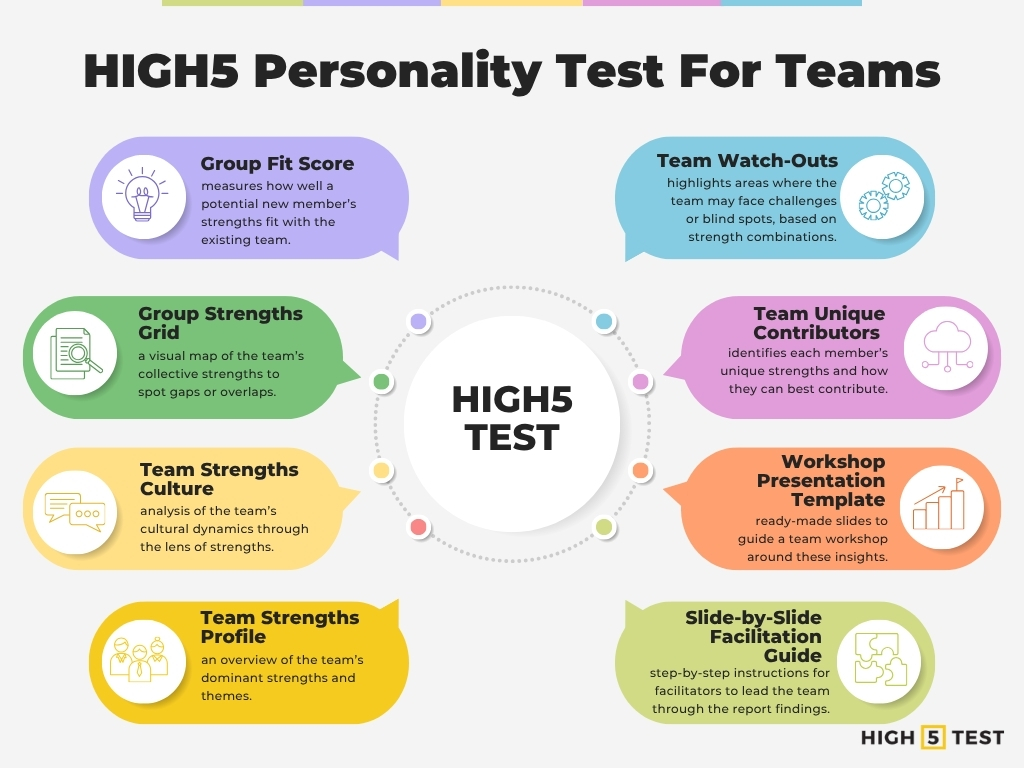Professionals and leaders know that trust is the foundation of any high-performing team. When team members genuinely connect and rely on each other, collaboration flourishes. The following trust-building activities and exercises, suitable for in-person or hybrid work settings, encourage openness, communication, and mutual respect. Each brief description below explains how the exercise works and why it fosters trust, with tips adapted from expert sources.

Activities and exercises for building trust
- Two Truths and a Lie
- Show and Tell
- Rotating Icebreaker Questions
- Eye Contact Challenge
- Birthday Line-Up
- HIGH5 Personality Test for Teams
- Egg Drop Challenge
- Scavenger Hunt
- Escape Room
- Minefield (Blindfold Obstacle Course)
- Trust Walk
- Snakes
- Pinball
- Human Knot
- Back-to-Back Drawing
- Blind Portraits
- Collaborative Art Project
- Minefield Variation (Communicate Readiness)
- Back-to-Back Standing (Partner Lean)
Icebreaker and sharing activities
Building trust in teams often starts with small, shared experiences. The following activities help create a more open and connected group by encouraging communication, empathy, and a sense of belonging.
1. Two Truths and a Lie
Each person states two true facts and one false statement about themselves; teammates must guess the lie. This classic icebreaker gets people talking and sharing personal anecdotes in a fun way, breaking down barriers. The lighthearted vulnerability (sharing facts about yourself) helps colleagues feel more connected.
- Time: 10-15 minutes
- Best for: Remote & in-person, new hires, icebreaker for executives
- Number of players: 4-20+
- How to play: Each participant states three facts about themselves: two true, one false. The group guesses which is the lie.
2. Show and Tell
Team members each bring a small personal item and explain its story or meaning. This gives everyone a platform to speak and be heard. When coworkers share their backgrounds or passions, they feel truly understood and heard, which builds empathy and trust.
- Time: 10-20 minutes
- Best for: Remote & in-person, new hires, exec values sessions
- Number of players: Unlimited
- How to play: Each person brings a personal or meaningful object and explains why it matters.
3. Rotating Icebreaker Questions
Pair participants and give each pair a simple, open-ended question (e.g., favorite hobby, proudest achievement). After a few minutes, rotate partners and ask another question. These brief, structured conversations help people become familiar with each other’s perspectives in a safe format. Swapping stories and “fun facts” lowers defenses and reminds team members that peers are relatable humans, a key step toward trust.
- Time: 5-15 minutes
- Best for: Remote & in-person, new hires
- Number of players: Unlimited
- How to play: Ask fun, open-ended questions (e.g., “What’s your favorite food?”). Rotate partners or answer in turns.
4. Eye Contact Challenge
In pairs, partners maintain steady eye contact for 60 seconds without speaking. Though it feels awkward at first, this simple exercise increases feelings of connection and even builds trust. Afterward, group discussion on the experience reinforces the empathy built by this nonverbal contact.
- Time: 5-10 minutes
- Best for: In-person, executive teams, trust-deepening sessions
- Number of players: 2-20 (pairs)
- How to play: Partners maintain silent eye contact for 60-90 seconds, then discuss how it felt.
5. Birthday Line-Up (No Talking)
Challenge the group to line up in chronological order of birthdays (month and day) without speaking. Team members must rely on gestures and teamwork to organize themselves, honing nonverbal communication.
This fun, silent puzzle encourages creative problem-solving and highlights how much can be accomplished without words, which in turn builds mutual understanding.
- Time: 10-15 minutes
- Best for: In-person, new hires
- Number of players: 6-25
- How to play: Without talking, participants must line up in order of their birthdays. Gestures and creative communication required.
Assessment and team profiling (HIGH5 Team Strengths)
Beyond games, teams can build trust by understanding each other’s strengths. The HIGH5 test for team building platform offers a Team Strengths Report (upgrade needed for it).
HIGH5 Personality Test for Teams
This strengths-based assessment identifies each member’s top strengths and compiles powerful team insights. Key features of the HIGH5 Team Report include:
- Group Fit Score – measures how well a potential new member’s strengths fit with the existing team.
- Group Strengths Grid – a visual map of the team’s collective strengths to spot gaps or overlaps.
- Team Strengths Culture – analysis of the team’s cultural dynamics through the lens of strengths.
- Team Strengths Profile – an overview of the team’s dominant strengths and themes.
- Team Watch-Outs – highlights areas where the team may face challenges or blind spots, based on strength combinations.
- Team Unique Contributors – identifies each member’s unique strengths and how they can best contribute.
- Workshop Presentation Template – ready-made slides to guide a team workshop around these insights.
- Slide-by-Slide Facilitation Guide – step-by-step instructions for facilitators to lead the team through the report findings.

- Time: 30-45 minutes (test) + 60-90 minutes (workshop)
- Best for: Remote & in-person, executives, new hires, cross-functional teams
- Number of players: 3-50+
- How to play: Each participant takes the HIGH5 test. Use the Team Strengths Report to review results.
Problem-solving and active collaboration
Trust takes root in action. When teams step into shared challenges, especially ones that demand communication and cooperation, they begin to develop confidence in one another. The activities below create moments where team members rely on each other to solve problems, offer support, and work through uncertainty together.
1. Egg Drop Challenge
Teams design a contraption (using straws, tape, paper, etc.) to protect a raw egg dropped from a height. The collaborative design and testing process forces groups to communicate clearly and innovate together under pressure. Although mainly a creative problem-solving game, it also builds trust as everyone must depend on each other’s ideas to succeed.
- Time: 30-45 minutes
- Best for: In-person, new hires, problem-solving teams
- Number of players: 4-40 (teams of 3-5)
- How to play: Teams build a contraption (from tape, straws, paper, etc.) to protect an egg dropped from a set height. Test and compare results.
2. Scavenger Hunt
Teammates work together to find items or solve clues around the office or outdoors. This high-energy hunt entertains while building relationships – as participants laugh and strategize, they practice communication and cooperation.
Scavenger hunts are designed to “build relationships” and exercise communication and problem-solving skills simultaneously, making them excellent for trust development.
- Time: 30-60 minutes
- Best for: In-person (office or outdoors), remote (home edition), new hires
- Number of players: 6-50+
- How to play: Teams race to find items or solve clues. First team back with the full list wins.
3. Escape Room
A group is “locked” in a themed room (mystery, adventure, etc.) and must solve puzzles within a time limit. Escape rooms demand close teamwork, as members share information, delegate tasks, and coordinate under time pressure.
This challenge enhances problem-solving, teamwork, and communication, fostering employee trust. Teams emerge with stronger cohesion and morale after successfully escaping together.
- Time: 60-90 minutes
- Best for: In-person or virtual escape rooms, executives, strategy teams
- Number of players: 4-10 per group
- How to play: Teams solve puzzles and riddles under time pressure to “escape” a themed room.
4. Minefield (Blindfold Obstacle Course)
Set up an obstacle course (using cones, furniture, etc.) and pair up participants. One teammate is blindfolded while the other gives verbal instructions to guide them through the course safely.
This forces the blindfolded person to 100% trust their partner’s directions, while the guide must communicate clearly and patiently. Navigating a “minefield” of obstacles builds confidence in one another and illustrates the value of clear support.
- Time: 15-25 minutes
- Best for: In-person, new hires, workshop energizer
- Number of players: 6-30
- How to play: Blindfolded participants navigate an obstacle course guided only by teammates’ verbal instructions.
5. Trust Walk
Similar to a Minefield, teams take turns blindfolding one member and guiding them through a path. For example, one guide may lead a blindfolded colleague around chairs or through an outdoor trail.
The blindfolded person has no choice but to rely on others for guidance. This activity highlights that teammates can truly be relied upon. In a variant called “Blind Trail,” the entire small group is blindfolded and holds onto a rope while navigating obstacles, requiring collective coordination and trust.
- Time: 20-30 minutes
- Best for: In-person, retreats, outdoor sessions
- Number of players: 6-20
- How to play: Group ties blindfolds and follows a rope trail through obstacles, relying on touch and teamwork to finish.
6. Snakes
Groups of 6-7 people line up single-file (like a “snake”), with all but the last person blindfolded. The sighted person at the end silently directs the snake by tapping shoulders (left tap = turn left, right tap = turn right, backward pull = stop).
The team must pick up scattered objects along the way. By communicating nonverbally through the chain of taps, participants learn to trust the signals and rely on teammates’ cues. Snakes exercises reinforce nonverbal trust and teamwork in a playful setting.
- Time: 20-30 minutes
- Best for: In-person, retreats, new hires
- Number of players: 6-20 (per snake chain)
- How to play: Teams form a “snake” line holding shoulders. All but the last person are blindfolded. The last guides the group by tapping shoulders to signal turns.
7. Pinball
Pinball is a blindfolded team member who stands in the center of a circle of colleagues. Teammates gently push and spin them around like a pinball, switching who holds them and nudges them back across the circle.
This dizzy, vulnerable position forces you to trust your teammates to put your fate in their hands. Everyone eventually has a turn, so each participant experiences both roles (mover and guider), promoting empathy and a sense of shared adventure.
- Time: 10-15 minutes
- Best for: In-person, team retreats, executives
- Number of players: 6-20
- How to play: A blindfolded person stands in the middle of a circle while teammates gently push and catch them, simulating a pinball machine.
8. Human Knot
Everyone stands in a circle, and each person grabs hands with two different people (forming a “knot” of crossed arms). The group must then untangle itself without letting go of hands. Successfully unknotting requires constant communication and collaboration.
This challenge forces communication and teamwork, as people discuss moves and decide on strategies to reach a solution. It’s a classic icebreaker/trust exercise: as participants physically depend on each other to untangle, they build rapport and problem-solving trust.
- Time: 15-20 minutes
- Best for: In-person, new hires, small groups
- Number of players: 6-20
- How to play: Participants stand in a circle, grab two different hands across the group, and work together to untangle without letting go.
9. Back-to-Back Drawing
In this pair exercise, partners sit back-to-back. One person (the “describer”) has a picture, and the other (“drawer”) has blank paper. The describer must verbally guide the drawer to replicate the image, without seeing it themselves.
No gestures or sight are allowed, so the exercise “emphasizes clear, concise instructions” and requires the drawer to trust their partner’s directions. Afterward, reviewing the drawings and process highlights how communication precision strengthens trust.
- Time: 15-20 minutes
- Best for: Remote & in-person, new hires, creative teams
- Number of players: 2+ (works best in pairs)
- How to play: One person describes a picture while their partner (back-to-back or remote) draws it without seeing. Compare results.
10. Blind Portraits
Pair up colleagues and have each draw a portrait of the other without looking at the paper. You simply stare at your partner and sketch what you see. The point is not artistic skill but careful observation and relaxed interaction.
This fun icebreaker (often used by art teachers) makes people more comfortable with each other, encourages attention to detail, and creates laughter over the funny results. Doing a blind portrait together subtly breaks down social barriers and builds trust through creative play.
- Time: 10-15 minutes
- Best for: Remote & in-person, new hires, creative teams
- Number of players: 4-20+ (pairs)
- How to play: Partners sketch each other without looking at the paper. Share hilarious results for laughter and bonding.
Collaborative and creative projects for building trust
Bringing people together through shared tasks builds trust and strengthens teamwork. These activities are simple, creative ways to encourage connection, mutual support, and communication in group settings.
1. Collaborative Art Project
Provide supplies (paints, markers, large paper or canvas) and have the team co-create one artwork. For example, each person paints or draws a section of a mural, or everyone adds to a single collage.
Shared art projects enable team members to collaborate on creating a piece of art, fostering collaboration, communication, and trust among team members. As participants discuss ideas and hand off tools, they experience a tangible shared accomplishment. Displaying the finished work in the office reinforces the pride of working together.
- Time: 30-60 minutes
- Best for: Remote (digital whiteboards) & in-person, creative or executive vision-setting
- Number of players: 6-40+
- How to play: Teams co-create a mural, collage, or shared visual. Each person adds their piece to the collective work.
2. Minefield Variation (Communicate Readiness)
In trust fall exercises like Willow-in-the-Wind, clear signaling is crucial. An important tip is to communicate readiness: the person about to fall (standing rigid) announces when they are ready, and catchers verbally confirm they’re prepared.
This mutual assurance prevents fear and ensures everyone feels safe. Explicitly practicing such communication during activities reminds teams that saying “I’m ready” or “I trust you” builds confidence and accountability.
- Time: 15-20 minutes
- Best for: In-person, new hires, problem-solving groups
- Number of players: 6-30
- How to play: Scatter obstacles across a room. Blindfolded teammates cross the space guided only by verbal instructions from their partner.
3. Back-to-Back Standing (Partner Lean)
(If space allows) Two teammates sit or stand back-to-back with arms interlocked. Together, they try to stand up or sit down in unison without using their hands for support. This simple trust exercise requires both to lean on each other and synchronize movements.
It’s a quick way to demonstrate mutual support: if one fails, both do. (While un-cited, similar partner-leans are common team-builders that reinforce relying on one another.)
- Time: 5–10 minutes
- Best for: In-person, new hires, small teams, quick energizer
- Number of players: Pairs (can scale to multiple pairs at once)
- How to play: Sit or stand back-to-back with arms linked. Work together to stand up (or sit down) without using hands, relying on each other’s balance and coordination.
Why trust-building exercises matter
Each of the above activities creates opportunities for openness and teamwork. Trusting others with a fall, a secret, or a blindfolded walk helps team members build a sense of reliance and support through shared experience. Research shows that when teams feel safe and connected, they communicate more, share ideas, and solve problems faster. Teams with higher trust consistently outperform others in both productivity and innovation.
Trust-building exercises encourage open and honest communication, which leads to fewer misunderstandings and more creative, cohesive collaboration. For leaders, using these activities regularly, along with genuine reflection, helps create a resilient and empowered team culture. Integrating these exercises (and tools like the HIGH5 Team Test) into retreats or meetings reinforces vulnerability, respect, and fun among colleagues.
Over time, the trust developed here translates into smoother daily work: people feel more comfortable sharing feedback and taking on challenges together. Ultimately, prioritizing trust-building is an investment that pays off in stronger team performance and engagement.
Related: Team-building activities for small groups
Conclusion
Trust doesn’t happen by accident; it’s built through shared experiences, open communication, and mutual support. Whether your team is remote, in-person, new, or executive-level, these activities create safe spaces to connect, collaborate, and rely on one another. Pairing fun challenges with tools like the HIGH5 Team Strengths Report helps deepen understanding and turn trust into long-term team performance.



